Are you a pet blogger and looking for useful SEO tips to boost your blog’s visibility in the search results? You have come to the right place.
In the increasingly competitive world of pet blogging, standing out from the crowd requires more than engaging content and adorable pet photos. Search Engine Optimization (SEO) is a crucial strategy to ensure your blog reaches its target audience.
Whether you’re sharing training tips, pet care tips and advice, pet health and wellness, breed specific information, product reviews, or heartwarming stories, these SEO tips will help your pet blog gain visibility and attract loyal readers.
Topics
- Choose the Right Keywords
- Craft Compelling, Keyword-Rich Titles
- Optimize Meta Descriptions
- Use High-Quality Images and Optimize Them
- Focus on Quality Content
- Incorporate Internal and External Links
- Leverage Social Media for Backlinks
- Optimize for Mobile Users
- Speed Up Your Website
- Utilize Schema Markup
- Encourage Reader Engagement
- Monitor Your SEO Performance
- Conclusion
RELATED
- Technical SEO for Bloggers Without Coding Skills
- How to Start a YouTube Channel & Blog on Pets & Make Money
- How to Repurpose Content for Different Platforms
- Voice Search Trends 2025 and Beyond
- How to Optimize Your Blog for Voice Search
- Understand On-Page SEO and Off-Page SEO
01. Choose the Right Keywords
Keywords are the backbone of SEO. Start by researching what pet owners and enthusiasts are searching online around your niche. You can use tools like Mangools Keyword Finder, Google Keyword Planner, AnswerThePublic, Ubersuggest, or Ahrefs to identify relevant, low-competitive, and high-traffic keywords.
For example:
- “Best toys for Golden Retriever puppies”
- “How to train a rescue dog”
- “Homemade treats for Bichon Frise”
Incorporate these keywords naturally into your blog titles, subheadings, and content without overstuffing.
| Keyword Overstuffing refers to excessively using keywords in content to manipulate search engine rankings. It can result in search engine penalties and a poor user experience, harming rankings and credibility. |
I searched for “rescue dog” on Mangools Keyword Finder. It shows all relevant search queries, Search Volume, SERP Overview, Keyword Difficulty, and much more.
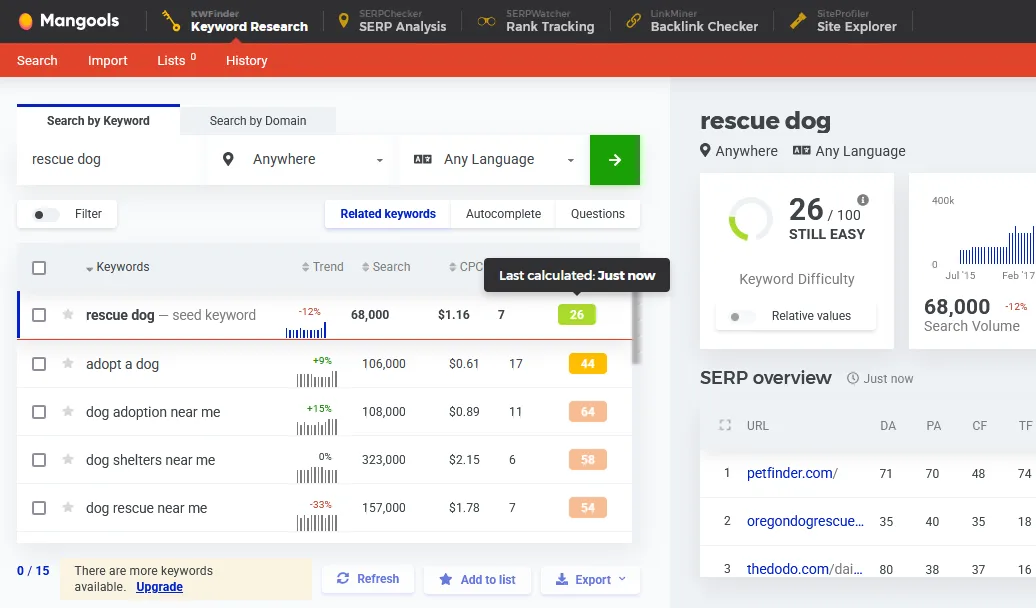
I searched for “Rescue dog” on AnswerThePublic. It shows common questions and search queries such as “How to adopt a rescue dog,” “Rescue dog training tips,”, etc, Search Volume, Competition Level, and much more.
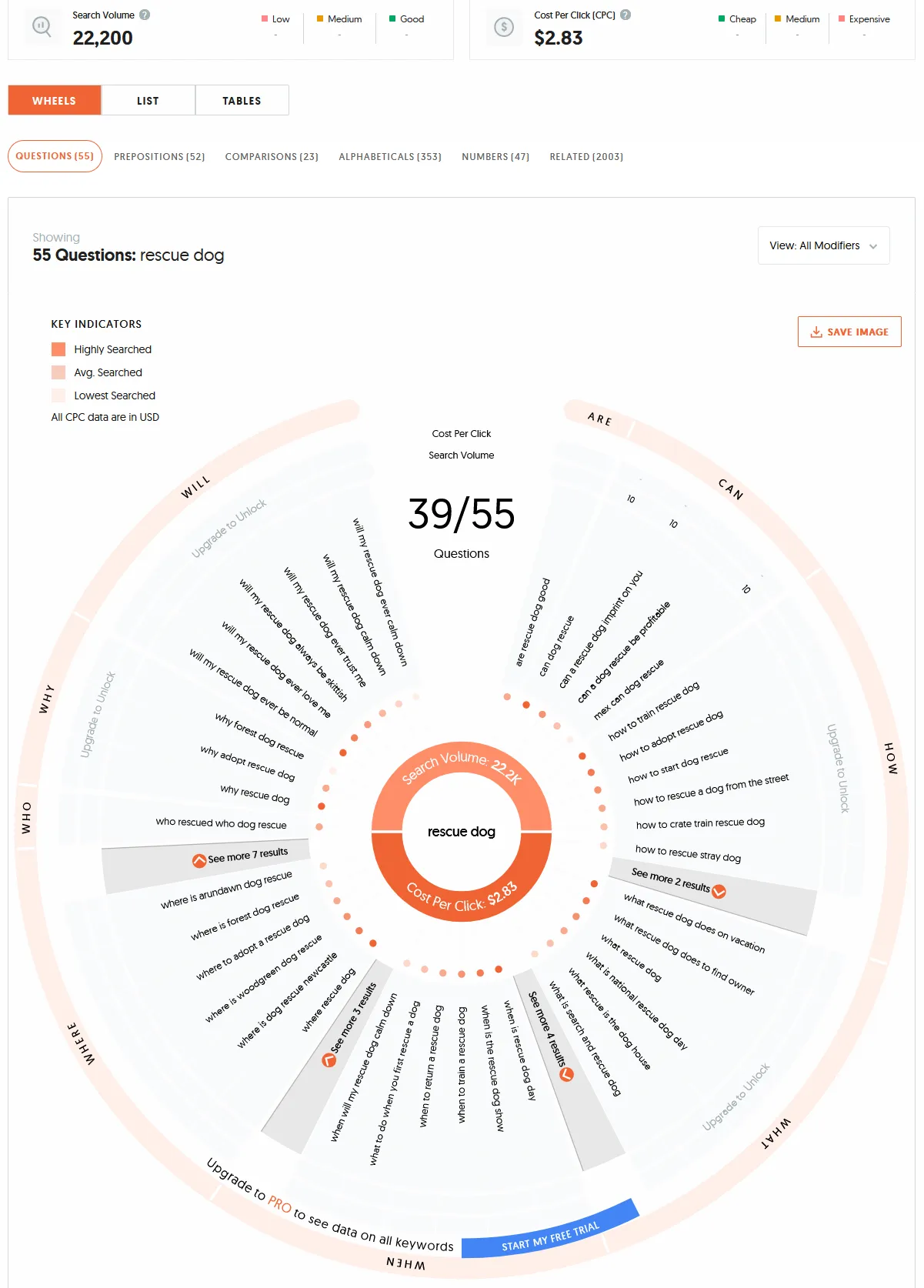
02. Create Compelling, Keyword-Rich Titles
Your title is the first thing readers and search engines see. Create titles that are both engaging and optimized for search engines. For instance:
- Weak Title: “Training Tips”
- Strong Title: “10 Effective Training Tips for Your Boston Terrier Mix”
These are some of the top tools to create compelling SEO-friendly post titles:
- CoSchedule Headline Analyzer – Analyzes headlines for SEO, readability, and emotional impact to optimize engagement.
- SEMrush Title Generator – Generates SEO-friendly blog title ideas based on target keywords.
- Portent’s Content Idea Generator – Offers creative and witty title suggestions by spinning a single keyword.
- HubSpot Blog Ideas Generator – Provides multiple blog topic ideas from one to five keywords for inspiration.
Semrush Free AI Title suggestions for the title “How to rain a rescue dog”.
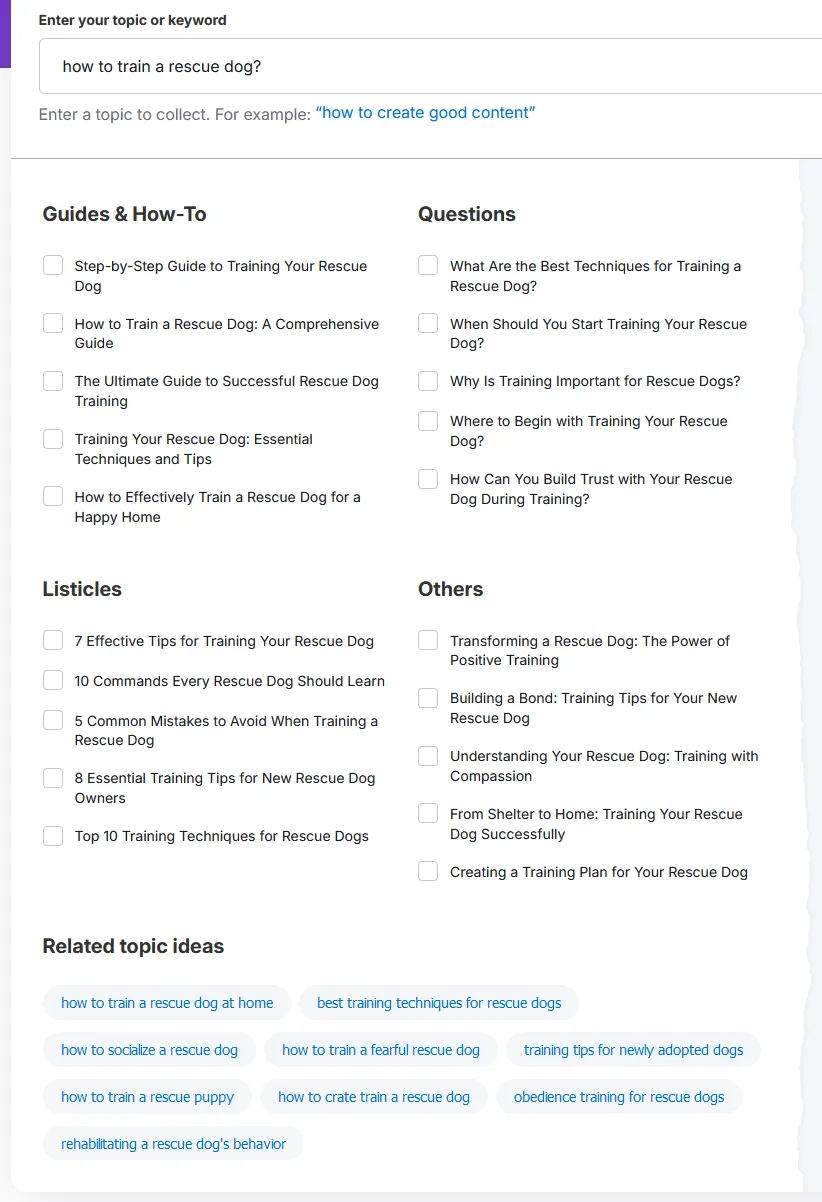
03. Optimize Meta Descriptions
Meta descriptions summarize your content in search engine results. Make them concise, compelling, and keyword-rich.
For example: “Discover the best training tips for your Boston Terrier mix, including easy-to-follow methods for house training and behavior management.“
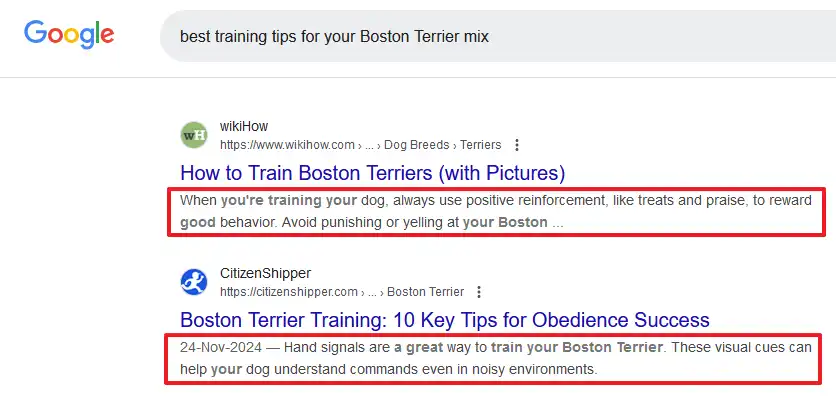
04. Use High-Quality Images and Optimize Them
Pet blogs thrive on visuals. Use high-resolution images and optimize them for faster loading times. Compress images using tools like TinyPNG and add descriptive Alt Text containing keywords to improve accessibility and SEO.
RELATED
- How to Compress JPEG, PNG, GIF, and PDF Online for Free
- Understanding Google Lens SEO: Optimizing for Visual Search
- How to Optimize Images For Pinterest SEO
For Example:
- Alt text: “Golden Retriever puppy playing with a chew toy”.

05. Focus on Quality Content
Search engines prioritize content that provides value. Write in-depth posts answering common questions, solving problems, or sharing unique insights.
For example:
- How-to guides (e.g., “How to Socialize a Rescue Dog”)
- Listicles (e.g., “Top 10 Grooming Tools for Bichon Frise Owners”)
- Personal stories that connect emotionally with your audience.
| Listicles are articles presented in a list format, combining text and visuals for easy reading. |
06. Incorporate Internal and External Links
Internal links help readers navigate your blog, while external links to credible sources improve your blog’s authority.
For Example:
- Internal: Link to your previous post on “Puppy Training Essentials.”
- External: Cite a trusted source like the AKC for breed-specific advice.
Example of external link.
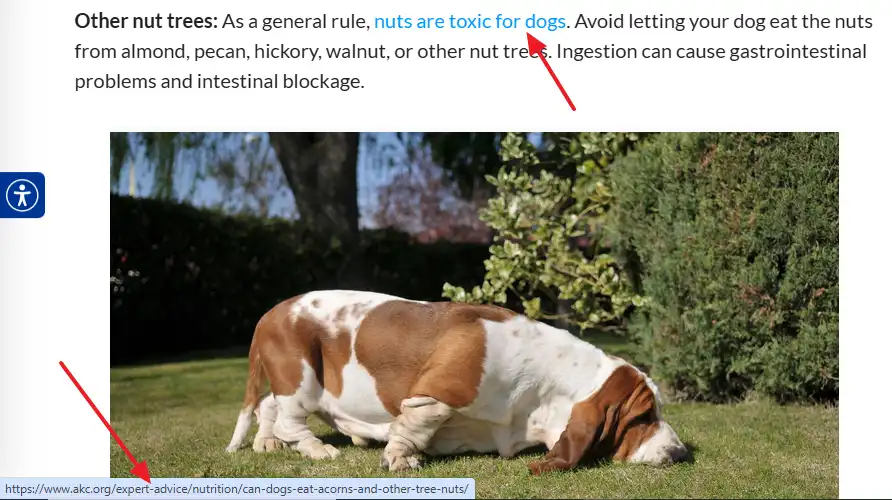
07. Leverage Social Media for Backlinks
Promote your blog on platforms like Instagram, Pinterest, and Facebook to reach pet-loving audiences. Engaging content increases shares, which can lead to valuable backlinks.
A survey revealed that 67% of pet parents follow pet accounts on Instagram or Facebook, indicating a substantial audience interested in pet-related content. [Reference: Successful Social Media for the Pet Industry].
According to a 2022 survey, 35% of cat and dog owners worldwide have set up social media accounts for their pets, reflecting the active participation of pet owners on these platforms. [Reference: Pet owners who have set up social media accounts for their pets].
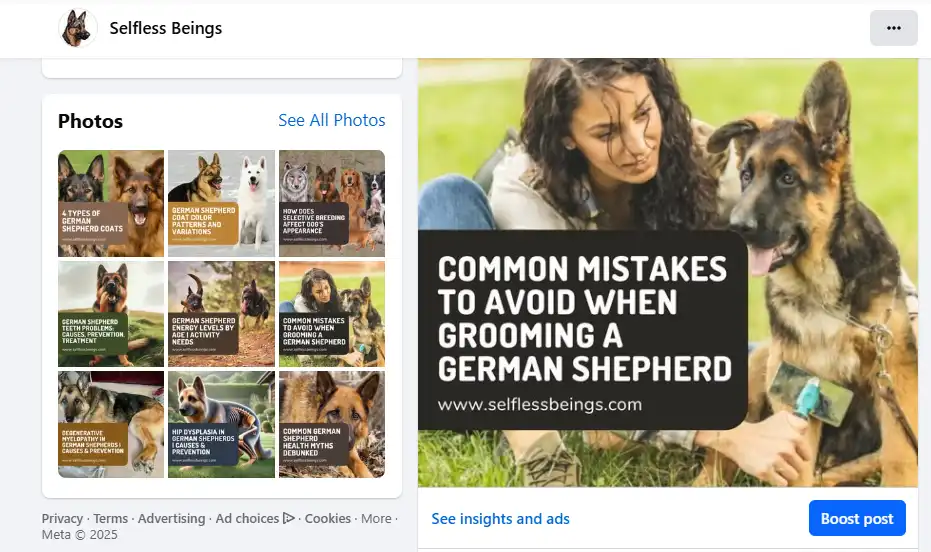
While social media shares are typically “nofollow” and don’t directly contribute to SEO rankings, they can indirectly benefit your blog’s SEO. High engagement on social media increases your content’s visibility, leading to more people discovering and potentially linking to your blog from their websites. This organic sharing can enhance your backlink profile over time.
RELATED
- How to Know If Backlinks are Helping or Hurting Your Website?
- How to Ensure Backlinks are Placed on High Quality Sites?
08. Optimize for Mobile Users
With most users browsing on smartphones, ensure your blog is mobile-friendly. Use responsive design and test your site’s performance on various devices.
| || Looking for amazing mobile-optimized responsive themes starting from $2? Find Here. Looking for a fast-performance web-hosting? Get Here. |
As of August 2024, 63.38% of global web traffic originated from mobile devices. [Source: What percentage of internet traffic is mobile].
In January 2024, mobile devices (excluding tablets) accounted for nearly 60% of web page views worldwide. Notably, over 73% of web page views in Africa were generated via mobile devices, while in North America, mobile accounted for approximately 45.5% of total web traffic. [Source: Mobile internet traffic as a percentage of total web traffic in January 2024, by region].
Here are some online tools to help you achieve a mobile-friendly website:
- Google PageSpeed Insights: Analyze your website’s performance on mobile devices and obtain recommendations to enhance loading speeds.
- BrowserStack: Test your website across various devices and browsers to ensure consistent performance and appearance.
- Website Planet: Use their free mobile-friendly test tool to check how well your website performs on different devices.
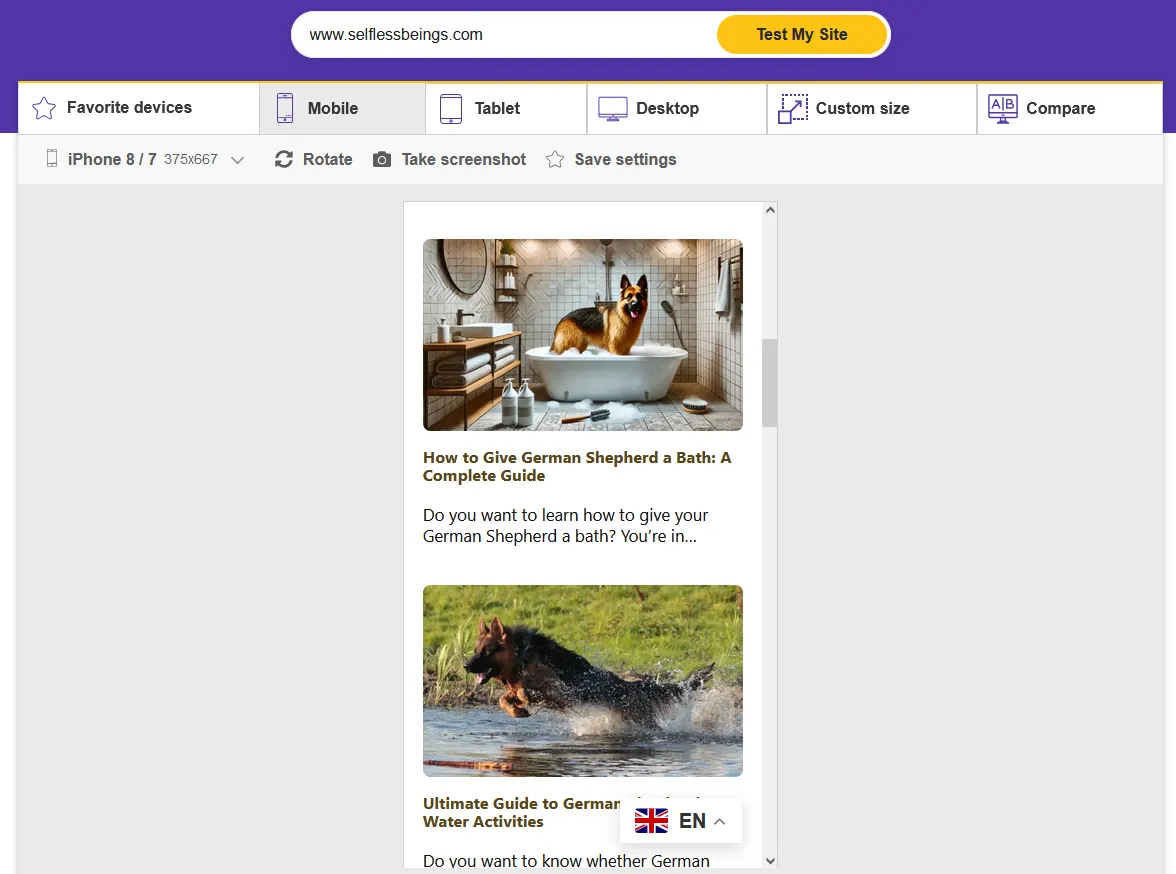
09. Speed Up Your Website
A slow-loading site frustrates readers and hurts SEO rankings. Optimize page speed by:
- Minimizing the use of heavy plugins
- Using a reliable and affordable hosting provider like Namecheap.
- Enabling browser caching
You can use PageSpeed Insights to analyze your website’s speed and receive actionable suggestions for performance optimization. Combine it with GTmetrix for a detailed report on loading times, file sizes, and improvement areas.
RELATED
- How To Buy a Domain & Web Hosting on Namecheap
- How to Migrate Hosting & Transfer Domain to Namecheap
- Find & Fix Runtime Score of Core Web Vitals Metrics (LCP, CLS)
- How to Pass Core Web Vitals for Monetized WordPress Blog
10. Utilize Schema Markup
Schema markup helps search engines understand your content better, improving visibility in search results. For pet bloggers, consider using:
- Recipe schema for DIY pet treat posts
- Product schema for pet product reviews
- FAQ schema for commonly asked questions.
To know more about What is Schema Markup, Benefits of Schema Markup, and How to add it on your website, read this guide:
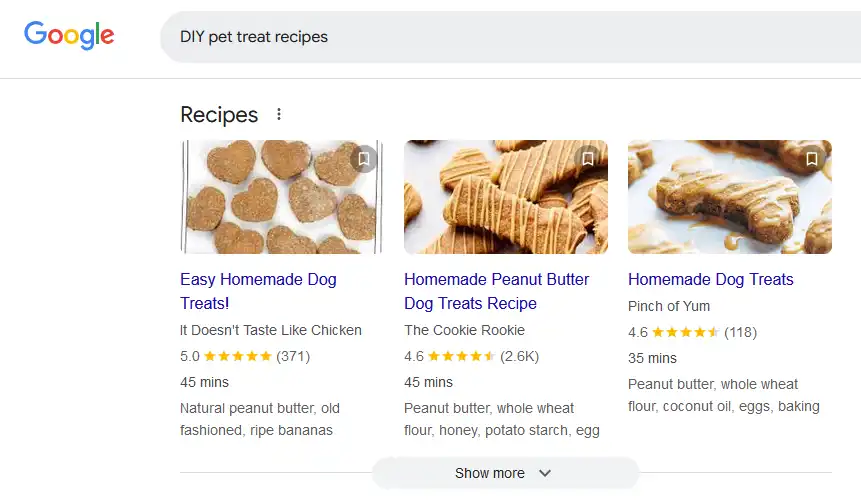
11. Encourage Reader Engagement
Encourage comments, shares, and subscriptions by ending posts with a call to action. For instance: “What’s your favorite homemade dog treat recipe? Share it in the comments below!“
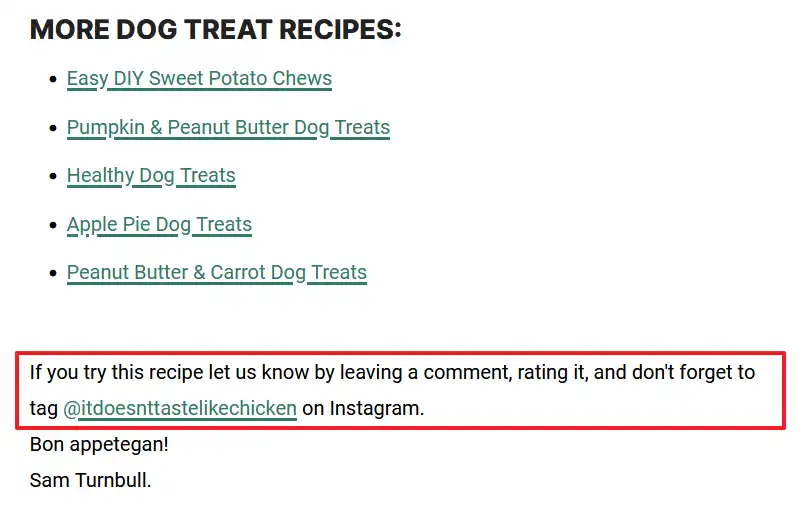
12. Monitor Your SEO Performance
Use tools like Google Analytics and Google Search Console to track your blog’s performance. Monitor traffic, bounce rates, and popular keywords to refine your strategy.
RELATED
- How To Sign Up & Link Website With Google Analytics 4 (GA4)
- How To Link Website To Google Search Console | Sign Up
- What is Dwell Time in SEO & How It Differs from Bounce Rate?
13. Conclusion
By implementing these SEO tips, pet bloggers can significantly enhance their online presence, reach a wider audience, and establish themselves as go-to resources in the pet community. Stay consistent, keep learning, and let your passion for pets shine through your blog.
Enjoyed this post? Share it with your friends to spread the word! We’d love to hear your thoughts—drop your feedback in the comments below!
Also Read






Leave a Reply